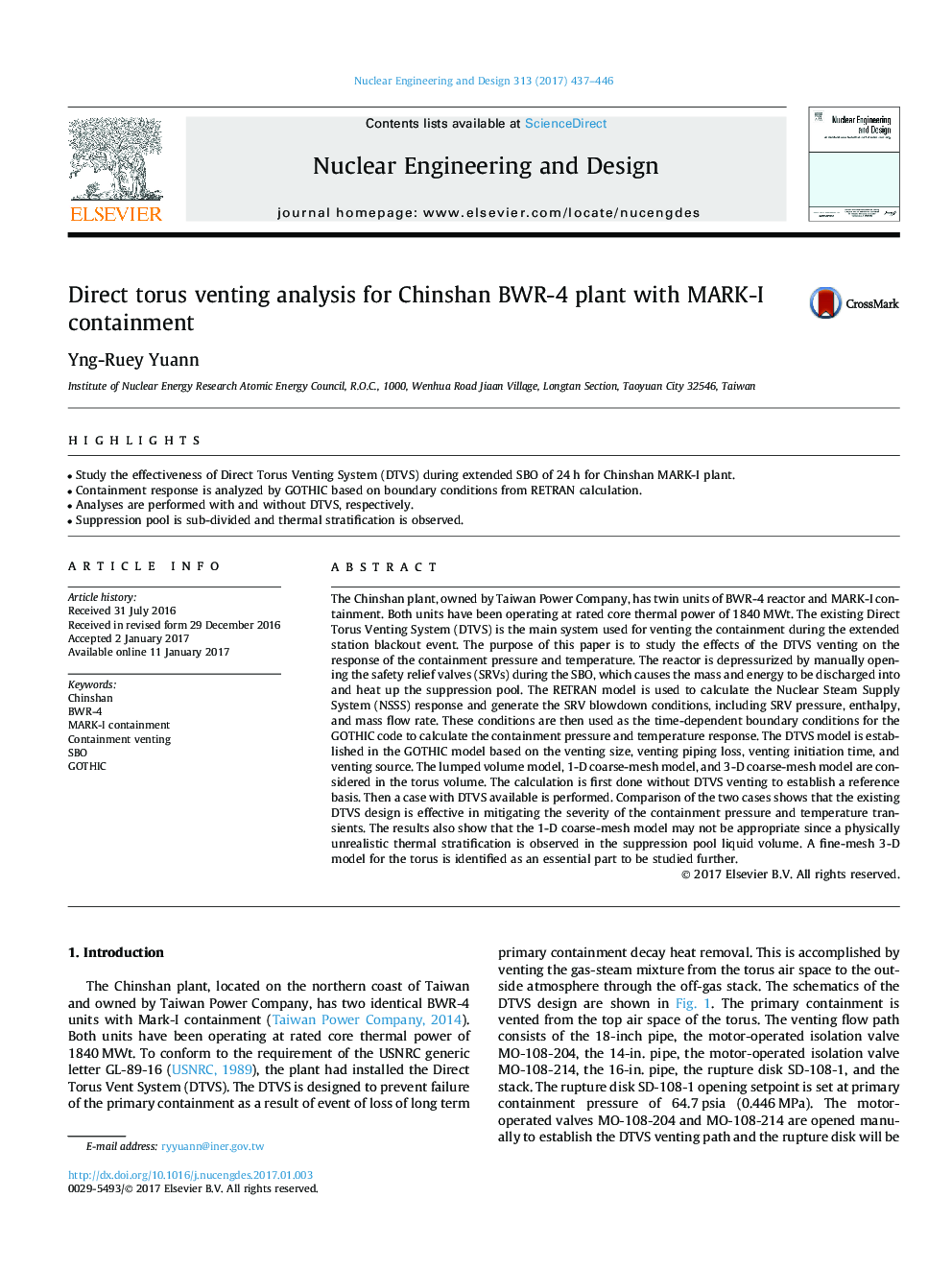| کد مقاله | کد نشریه | سال انتشار | مقاله انگلیسی | نسخه تمام متن |
|---|---|---|---|---|
| 4925558 | 1431408 | 2017 | 10 صفحه PDF | دانلود رایگان |
عنوان انگلیسی مقاله ISI
Direct torus venting analysis for Chinshan BWR-4 plant with MARK-I containment
دانلود مقاله + سفارش ترجمه
دانلود مقاله ISI انگلیسی
رایگان برای ایرانیان
کلمات کلیدی
موضوعات مرتبط
مهندسی و علوم پایه
مهندسی انرژی
مهندسی انرژی و فناوری های برق
پیش نمایش صفحه اول مقاله

چکیده انگلیسی
The Chinshan plant, owned by Taiwan Power Company, has twin units of BWR-4 reactor and MARK-I containment. Both units have been operating at rated core thermal power of 1840Â MWt. The existing Direct Torus Venting System (DTVS) is the main system used for venting the containment during the extended station blackout event. The purpose of this paper is to study the effects of the DTVS venting on the response of the containment pressure and temperature. The reactor is depressurized by manually opening the safety relief valves (SRVs) during the SBO, which causes the mass and energy to be discharged into and heat up the suppression pool. The RETRAN model is used to calculate the Nuclear Steam Supply System (NSSS) response and generate the SRV blowdown conditions, including SRV pressure, enthalpy, and mass flow rate. These conditions are then used as the time-dependent boundary conditions for the GOTHIC code to calculate the containment pressure and temperature response. The DTVS model is established in the GOTHIC model based on the venting size, venting piping loss, venting initiation time, and venting source. The lumped volume model, 1-D coarse-mesh model, and 3-D coarse-mesh model are considered in the torus volume. The calculation is first done without DTVS venting to establish a reference basis. Then a case with DTVS available is performed. Comparison of the two cases shows that the existing DTVS design is effective in mitigating the severity of the containment pressure and temperature transients. The results also show that the 1-D coarse-mesh model may not be appropriate since a physically unrealistic thermal stratification is observed in the suppression pool liquid volume. A fine-mesh 3-D model for the torus is identified as an essential part to be studied further.
ناشر
Database: Elsevier - ScienceDirect (ساینس دایرکت)
Journal: Nuclear Engineering and Design - Volume 313, March 2017, Pages 437-446
Journal: Nuclear Engineering and Design - Volume 313, March 2017, Pages 437-446
نویسندگان
Yng-Ruey Yuann,